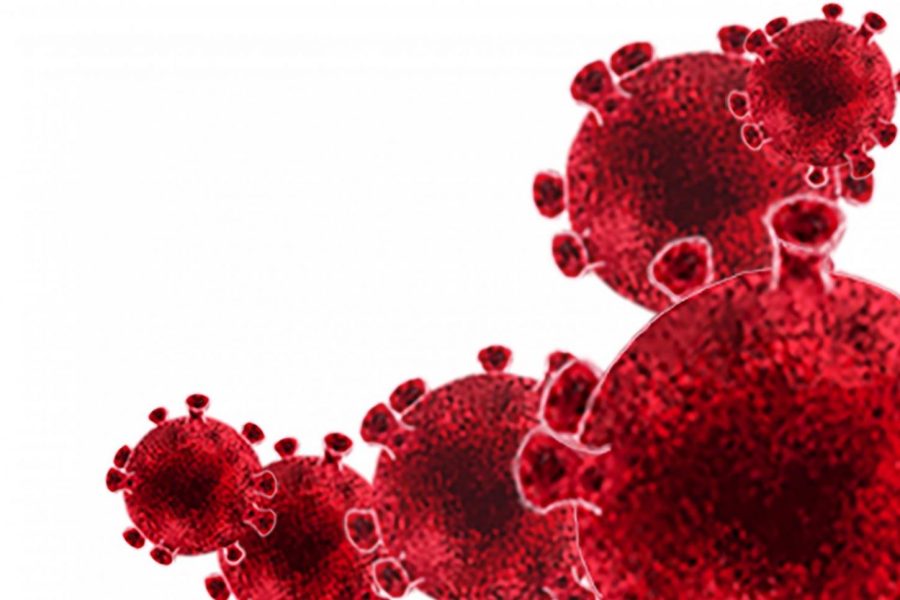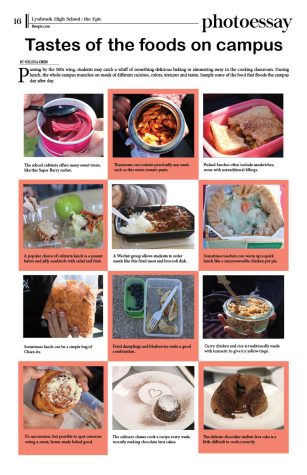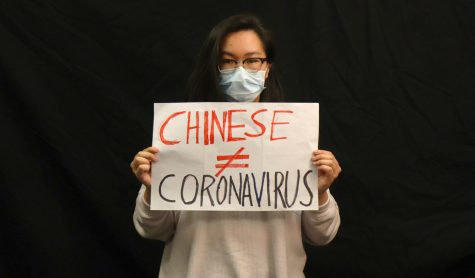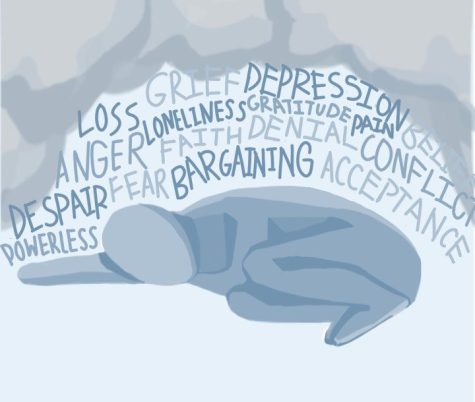Novel coronavirus: unmasking the epidemic
Graphic illustration by Diana Kohr
Coronavirus (COVID-19)’s made its appearance in January, misconceptions and myths have run rampant.
Since the novel coronavirus (COVID-19)’s appearance in January, misconceptions and myths have run rampant. The virus originated in the Huanan seafood market in Wuhan, China, and has currently infected nearly 80,000 people worldwide. On Jan. 31, the World Health Organization (WHO) declared the situation a public health emergency, meaning the disease poses a potential threat to individuals outside of the country of origin.
COVID-19, a new strain of coronavirus previously unidentified in humans, is typically carried by bats. Unlike other strains of coronavirus, which usually lead to mild to moderate respiratory diseases, COVID-19 can result in serious complications, such as pneumonia, fever and difficulty breathing.
Rumors have spread regarding the origin of the virus, including the idea that bat soup infecting the first people who contracted the disease. However, this is not true, since the market in which the virus originated sold seafood, not bats. This means that there is likely another intermediary animal responsible for the spread of the virus from bats to humans. Scientists have focused their attention on the variety of wildlife bought and sold in the Huanan seafood market. Among the animals sold, the pangolin is under the greatest scrutiny.
Many have drawn comparisons between COVID-19 and Severe Acute Respiratory Syndrome (SARS) or Middle East Respiratory Syndrome (MERS), both of which are types of coronavirus spread by bats that can result in severe respiratory complications. SARS originated in China in 2002, then spread worldwide. MERS was first reported in Saudi Arabia, then spread worldwide, with those infected showing similar symptoms to SARS.
Many believe that COVID-19, while related to SARS and MERS, is much more dangerous than either of the other two strains. However, as of February 2020, the fatality rate for COVID-19 is 10 percent. In contrast, SARS had a fatality rate of 14 percent, while other diseases, such as the flu, have resulted in an estimated 26 million cases in the U.S. alone, with 14,000 of them leading to death.
Another common myth regarding the disease is that it is dangerous to receive packages sent from areas affected by COVID-19. In reality, strains of coronavirus do not survive long outside their host, eliminating the risk of contracting the disease from packages. Viruses from this family can typically survive up to five days on surfaces such as plastic, glass and aluminum.
The typical person who contracts COVID-19 spreads it to 1.4 to 2.5 other people, according to the WHO. Though the virus is most contagious when the infected individual displays symptoms, such as a fever or coughing, those with COVID-19 can infect others even without visible symptoms. The most common forms of transmission of COVID-19 are coughing and sneezing, which spread respiratory droplets. Those who maintain close contact with infected patients or touch infected surfaces, then touch their eyes, nose or mouth, are also likely to contract the disease.
Another myth is that people from certain age groups, specifically older and younger people, are more likely to be infected with COVID-19. In truth, people of all age groups are equally likely to be infected, although older and younger people are likely to develop more severe symptoms since they typically have weaker immune systems.
“The misconception that we hear a lot is that anyone who is Chinese has coronavirus,” said Chrissy Cheung, health planning specialist for the Santa Clara Public Health Department. “That is not true. The risk factor for getting coronavirus is travel to China. That is really what we are looking for. If someone comes back and starts developing symptoms within fourteen days, we would consider coronavirus. There are very specific risk factors that we’re looking for.”
The novel nature of the disease raises many uncertainties for those who have contracted it, even after recovery. Unfortunately, there are not enough recoveries so far to support any hypotheses regarding the nature of life after infection. As developments progress and researchers observe more patients, they can begin to understand the nature of any aftereffects, if there are any.
“I heard that the disease can stay in your system even after you’re recovered,” sophomore Angela Sun said. “This development raises the possibility that people who don’t display symptoms can still be carriers and infect others.”
According to the WHO, the best way to stay healthy is to follow everyday health safety precautions, which include washing hands even when they are not visibly dirty, covering the face with the arm when sneezing and seeking medical care early for respiratory symptoms.
Principal Maria Jackson encourages students to stay home if they feel sick, following the advice of health professionals.
“The Lynbrook administration is carefully following the guidelines we receive from the Santa Clara Public Health Department,” Jackson said. “It is important for students who are sick to stay home until they are well. That is the best measure to stop the spread of communicable disease.”
Students are encouraged to look to government organizations or reputable news publications, such as the CDC, for information. School librarian Amy Ashworth also encourages students to fact check before communicating any news on the virus in order to avoid falling prey to misinformation.
“Unless you know where you’re getting your information is a reliable source, you can’t rely on social media to give you information,” Ashworth said. “The CDC is a government source that is being paid to gather information. They don’t want to cause panic, and they relay good information to the public.”

Youqi is a senior and a Copy Editor. In her free time, she likes to watch soccer and watch movies.

Diana is a junior at Lynbrook High School and one of the web editors for the Epic. She enjoys going on long-distance runs with her friends, preferably...








































































